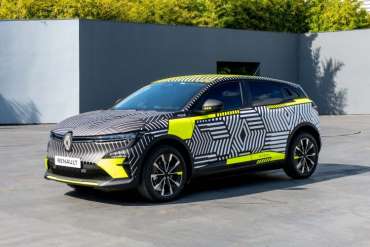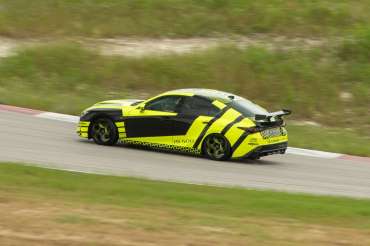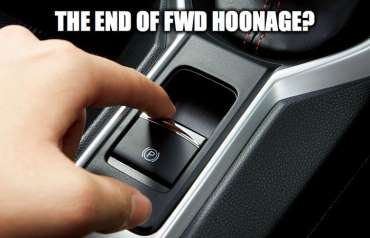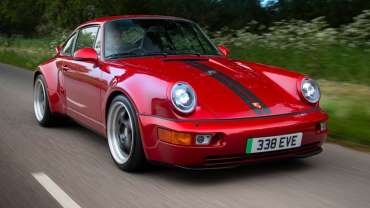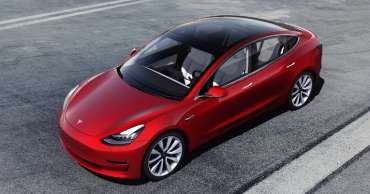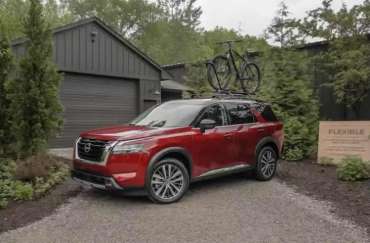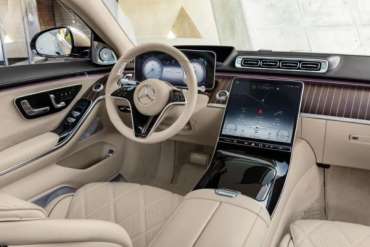
Worldcarblog.com
A radical change: The new Renault Megane is an electric crossover
We were told a few months ago that we can forget about the Renault Megane as we knew it so far. However, the new generation of the once popular hatchback still wants to maintain the tradition, but only in one thing - to remain in demand. And as trends have changed, it can only do so if it becomes a crossover and an electric one. So, goodbye for the hatchback and SUS engines, these are the official photos of the Megane prototype. However, it is still under camouflage because the premiere is awaited, and the start of production of the serial version will be in 2022.
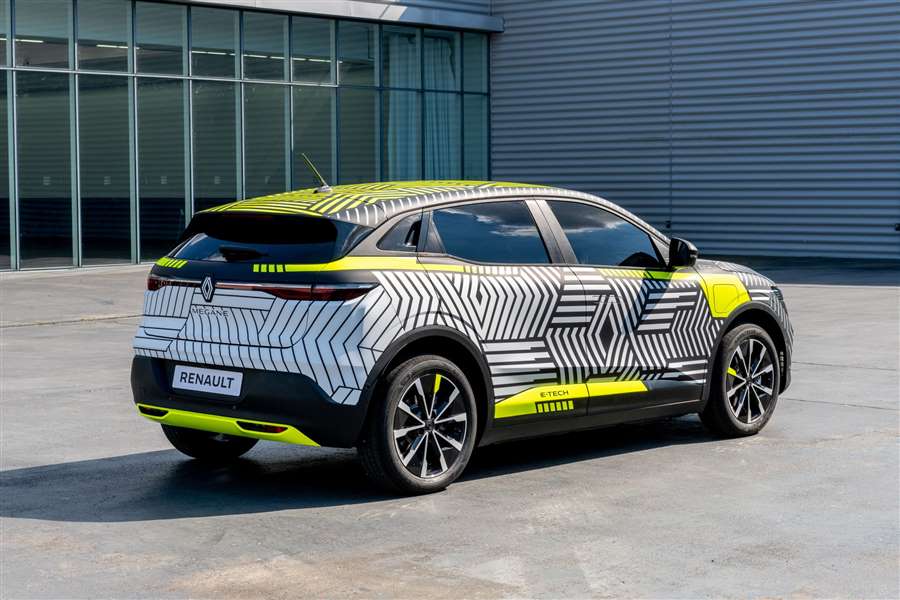
The French manufacturer showed us a prototype of the new Megane. The cunning plan to use the name Megane for a model that has nothing to do with the previous one, was coined just to help the new crossover establish some connection with previous Renault cars.
This is a pre-production model that is still camouflaged, but you can clearly see the form of the crossover, which will be the first in the alliance to use the CMF-EV platform, writes Index.hr. It is the same base used by the electric Nissan Ariya.
Renault is not revealing much data for now, but it is announcing that MeganE will have an electric motor with a power of 217 hp and a battery with a capacity of 60 kWh, which will provide a range of 450 km.
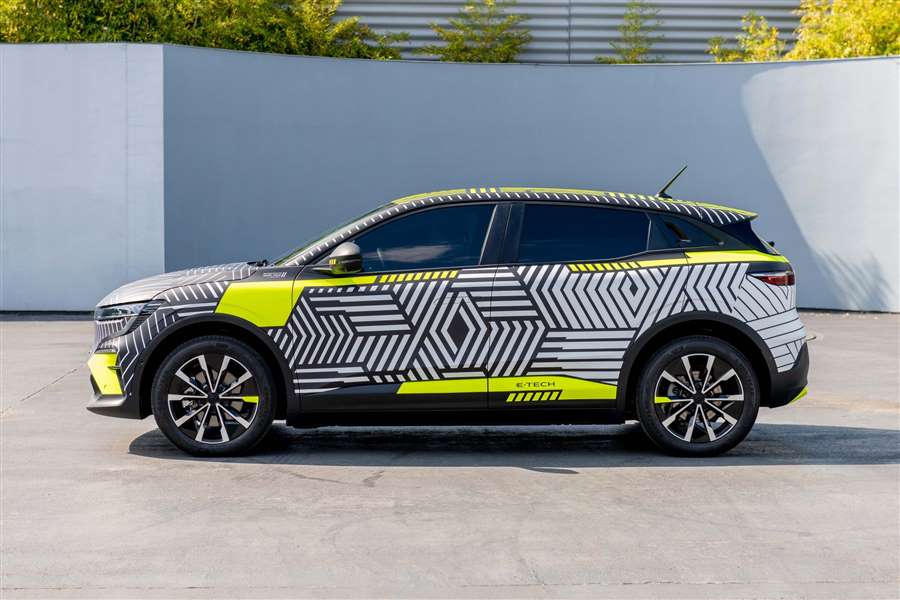
It is not yet known whether, like Ariya, they will get a version with two electric motors that has over 300 hp, but also a 87 kWh battery. Judging by what the rivals offer, it should offer such a variant as well.
In any case, the first 30 camouflaged copies Renault will release on European roads this summer.
The new model will be produced in French plants (Douai), starting next year.
2022 Lexus IS500 Brings Back the V-8
The newest F Sport Performance version of the IS takes us back to the golden era of compact sports sedans with naturally aspirated V-8 engines.
About a decade ago, compact sports sedans offered naturally aspirated V-8s that absolutely ripped. Before everyone went turbo, the E90 BMW M3, the B7 Audi RS4, and the W204 Mercedes C63 AMG crammed in sweet-sounding V-8s to create experiences that we still remember fondly today. Now that we're feeling sufficiently nostalgic for those four-door screamers, we'll get to the point that Lexus apparently shares our passion for those cars, because the new 2022 IS500 is essentially a return of Lexus's V-8 compact sedan, the IS F.
There are no turbos under the IS500's hood. What is under there is closely related to the IS F's 5.0-liter V-8 from a decade ago. The engine—shared with the RC F—now produces 472 horsepower and 395 pound-feet of torque, or 56 more horsepower and 24 more pound-feet than its spiritual predecessor. In a turbocharged world, the V-8's horsepower and especially its torque numbers aren't at the level of the M or AMG models', so Lexus is setting expectations by positioning the IS500 as an F Sport Performance model rather than a full-blown IS F.
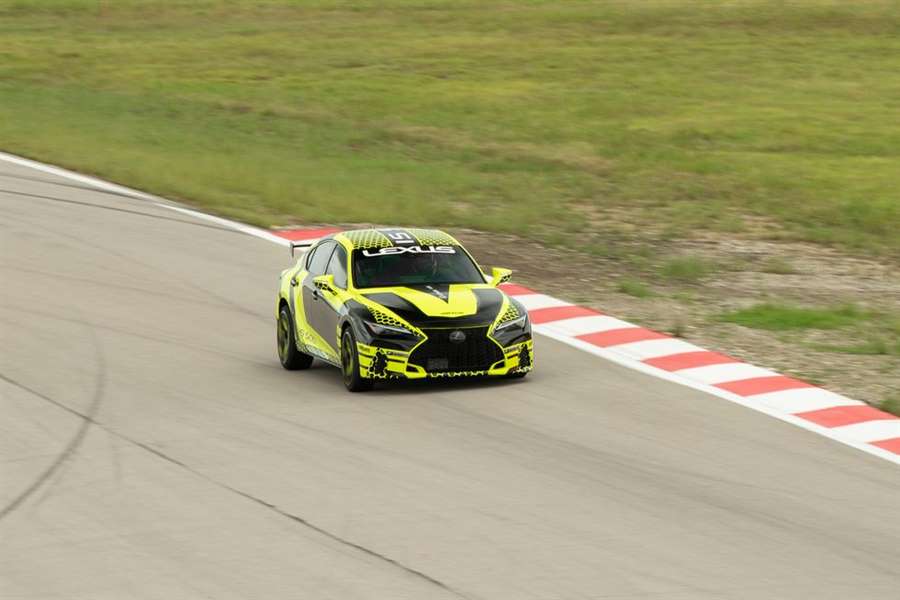
What does that mean for the IS500's driving experience? We can't quite say yet, but we did recently get the chance to ride in the passenger's seat of the IS500 prototype at an event at Eagles Canyon Raceway in Texas, near Toyota's headquarters in Plano. Professional race-car driver Townsend Bell was behind the wheel.
Keep in mind that the IS500 prototype we rode in wasn't exactly the same car that you'll be able to buy at Lexus dealerships later this year. Wrapped in an obnoxious neon-yellow and black livery, this car was specially prepped for the IS500's debut at Sebring International Raceway earlier this year. It wore an aftermarket exhaust, 20-inch wheels, and grippier Michelin Pilot Sport 4S summer tires compared to the stock car, which will have 19-inch wheels and the same Bridgestone Potenza S001L summer tires as the IS350 F Sport with the handling package.
This means that our impression of the IS500's handling isn't exactly representative, but we weren't behind the wheel anyway. We can tell you that the 5.0-liter V-8 engine is a lovely addition to the latest IS and brings back a lot of those tingly V-8 memories. We're familiar with the glorious sound of this Lexus V-8 by now, and it makes itself known in the IS500. Although the prototype's aftermarket exhaust surely enhanced the auditory experience, we'd still rather listen to this characterful engine run up to its 7300-rpm redline than a BMW M3's twin-turbo inline-six.
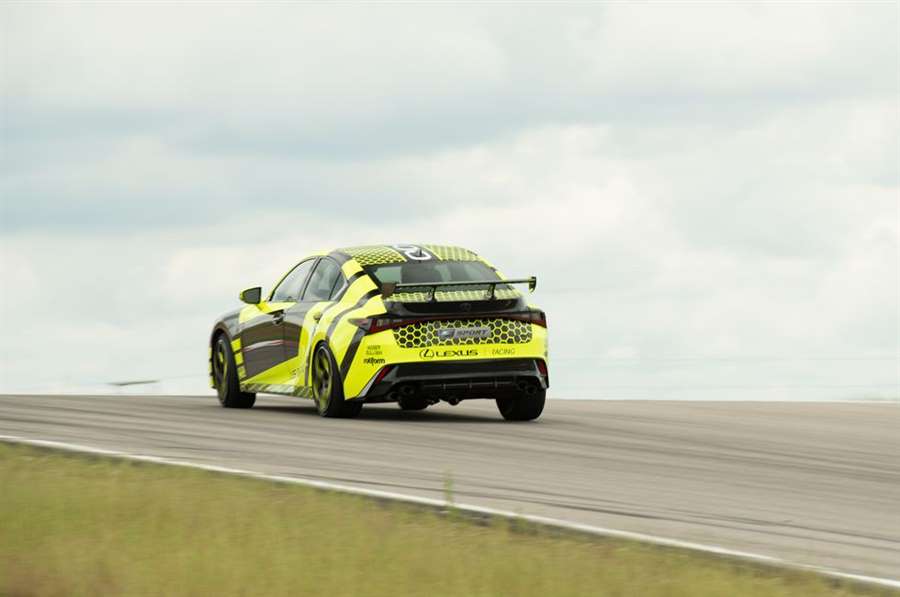
Unlike the V-6-powered IS350 F Sport we drove that day on the test track, the V-8 has the grunt to shove you into the back of your seat, and the eight-speed automatic transmission upshifts and downshifts quickly. Lexus claims that the IS500 is 143 pounds heavier than a rear-wheel-drive IS350, and we assume that most of that weight is in the nose. Like the IS F that came before it, a noticeable hood bulge is the clearest sign that this is packing something special under there.
Thanks to the ability to completely deactivate stability control, the IS500 will play as much as you like—as Bell demonstrated by easily swinging the tail out wide for a satisfying drift. It also features the same torque-vectoring rear differential that's optional on the IS350 F Sport. But this car is not meant to be a track monster, and we felt plenty of compliance in the suspension tuning, with more body roll than you'd find in an M3 Competition or a C63, for instance.
We're enticed by the overall package that the IS500 promises to deliver, and we hope that the price is attractive enough to further increase its enthusiast appeal. Lexus has strongly hinted that it will be positioned closer to the M340i and AMG C43s of the world, meaning it could bring back a V-8 to the low-$60,000 range. If so, this could become the hidden gem of the sports-sedan world. Now all that's left is for Lexus to let us in the driver's seat.
(caranddriver.com)
How the electric parking brake works: What happens if you activate it while driving?
The brake mechanism is hydraulic or mechanical and will not be released when the battery is discharged.
Most cars you can buy on the market today have electric parking brakes. Parking brakes are becoming rarer. How do electric parking brakes work? They make it easier to move uphill and downhill because they block the wheels until they have enough torque to start the vehicle.
What if you pull the electric parking brake switch while driving? Will the same thing happen with a handbrake? No, it will not, because the control unit in the car recognizes this situation as braking the car and there is no wheel lock. The electric brake then applies force at intervals, ie the ABS is activated. Basically, concentrate and don’t pull the electric parking brake switch while driving.
The brake mechanism is hydraulic or mechanical and will not be released when the battery is discharged. That is, no electricity is required to maintain a firm brake grip.
Everrati Porsche 911 (964) Signature review: retro electric 911 tested
With stricter emissions regulations, combustion engine bans coming into force in the future and changing attitudes to electrification, the restomod scene has exploded with new electric possibilities. You can now get no end of classic cars modified or completely overhauled to run on e-power.
But Everrati is convinced its electric creations aren't as simple as just swapping out a combustion engine for an electric powertrain.
'We take some of the world's most beautiful and seminal cars, restore and re-engineer them, always operating with full respect for the brands that created them,' says Everrati boss, Justin Lunny.
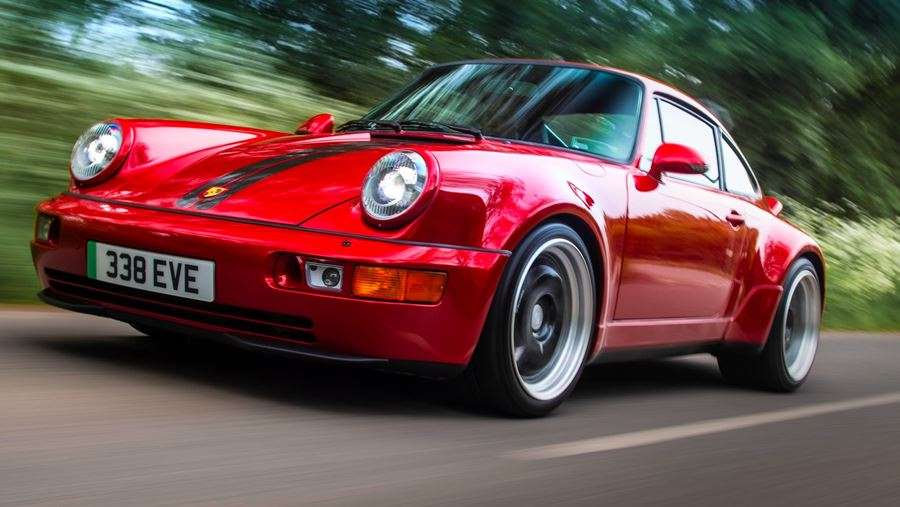
We've driven a prototype of Everrati's latest creation – a 964-generation 911 – to see if an electric icon can really work.
What's Everrati?
It's a technological and engineering company founded in 2019, designed to cater to those who want to keep their classic cars but make sure they're ready for the electric age. The company has had previous projects with the Mercedes SL and Land Rover Defender and, more recently, has diverted its attention to classic and retro generations of the 911.
But what Everrati strives to do is not just restore and redefine a classic by making it electric but keep as much of the DNA from the original as possible. Fun is the priority here, with Everrati seeing the benefits of an EV powertrain like instant torque and throttle adjustability being front and centre with its sports car projects. The advantages of holier-than-thou zero-emissions running, cheaper running costs, (predicted) cheaper maintenance costs and the ability to whizz around clean air or congestion zones for free are mere bonuses.
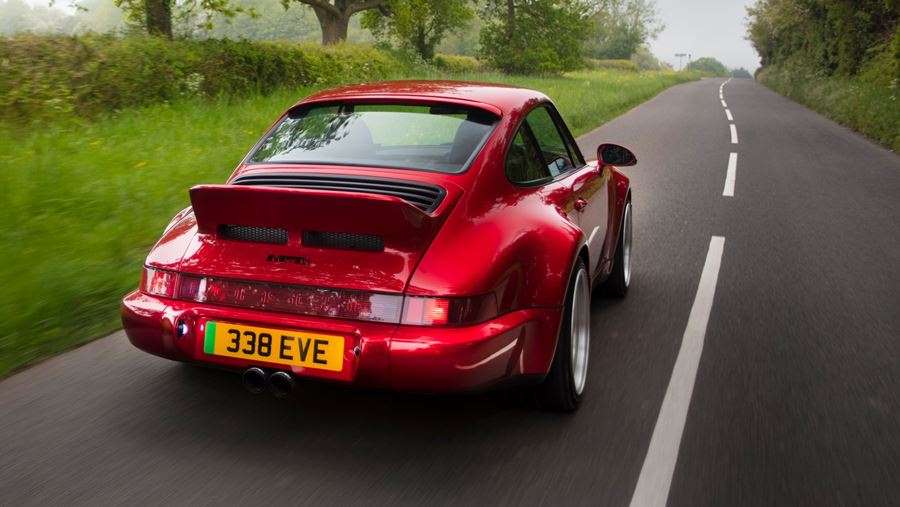
So, with this 964-generation 911 project, the targets have always been about maintaining the car's weight and weight distribution, its retro looks and its Porsche feel inside.
So how has Everrati done that?
You'll need at least £250k to start the process. The team take a 964 donor car (either one you already own, or one Everrati will source for you to perform the restoration on for an extra cost), strip it down to parts and water blast, then rust protect, the chassis, seam-welding it in the process. The front and rear wheelarches, doors and bonnet are recreated with carbonfibre to keep weight down.
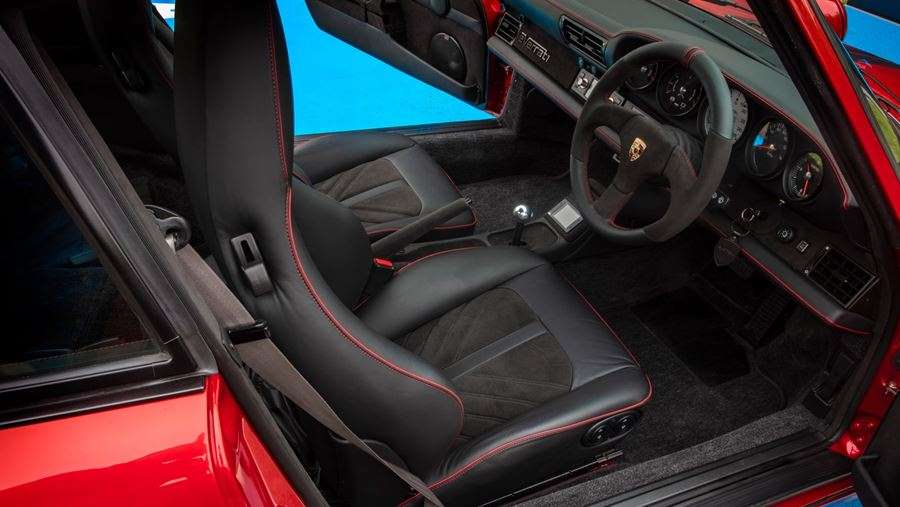
Speaking of weight, Everrati has the aim of keeping the each of the electric 911s it makes as close to the standard car as possible. The 53kWh battery pack is split into two, housed beneath the front and rear bonnets to maintain the car's 40:60 front/rear weight balance. A single e-motor drives the rear wheels, producing 500bhp and 369lb ft (even more power than the 964 Turbo S could ever claim). Everrati claims around 150 miles on a single charge – not a huge number, but the team see this as an 'A-to-A car' – something to go for a drive in when you have some free time, rather than an entirely usable daily driver – given the clientele will almost certainly have fat enough wallets to have more than one car in the garage.
Everrati says the entire process can also be reversed, if the owner changes their mind, allowing the engine and transmission to be refitted. If you stick with the EV powertrain, the team also offers to refurbish the engine and keep it in storage, or even make it a piece of art for your home.
As for dynamics, Everrati includes electronically adjustable suspension, allowing you to attack a B-road with a stiff setup or go grand touring with a squishy motorway one. Every model built also features a Quaife differential for the driven wheels and renewed Brembo brakes with drilled, ventilated discs.
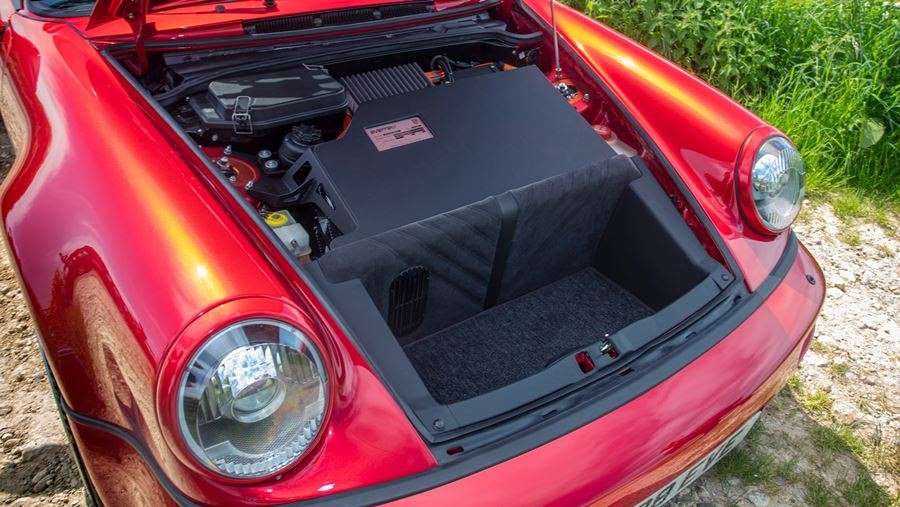
Inside, it's still very much a 964 – clean and simple but with all the key switchgear in the same place – albeit with a few changes. The original seats are overhauled with four-way electrical adjustment, Porsche's Classic Communications Management system is installed in the dashboard to allow for thoroughly 21st century tech like Apple CarPlay, DAB and navigation. The dials are in keeping with Porsche's original design, but the info displayed is very much geared (wired?) towards the electric powertrain, showing the car's state of charge, power and cooling. Our test prototype was swathed in Alcantara, too.
Does it do clever EV things?
It does. There's regenerative braking if you lift off the throttle, with the option to enable regen fierce enough to drive with one pedal. Everrati has engineered in both AC and DC charging via a CCS socket, allowing your electric 911 to be charged at up to 100kW and a 10 to 100 per cent charge possible in under an hour.
When the car launches, it will have both Sport and Eco modes for the powertrain, with Sport being the default and Eco restricting throttle response.
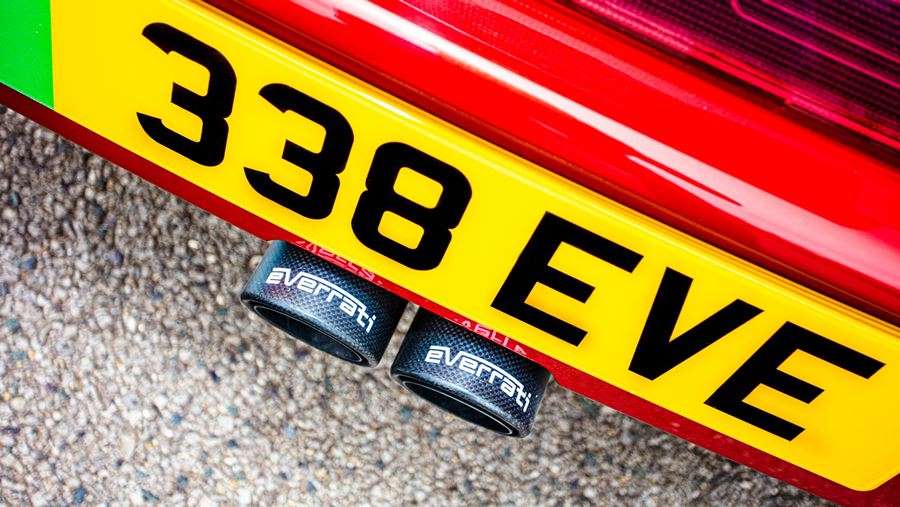
As an aside, Everrati is also developing a sound system capable of emitting engine noises that you can modify via an app tuned to the car's speed, even including throttle blip sounds when you slow down. The tech was in its early stages when we tested it, but the team want the finished product to have speakers both outside and inside the car for the best experience. You can, of course, turn it off if you're so inclined.
Mike Kerr, Everrati's engineering director, who's had roles at Lotus and McLaren (including being the brains behind the new Artura's gearbox), told us that future development ideas include programming in torque steps to the motor to mirror the gear changes of the donor car. Everrati is also open to the possibility of better battery chemistries coming along that can increase range being fitted into the 911 creation after it's already been restored.
Come on then, how does it drive?
Well, first things first, turning the starter key to the eerie sound of silence is a little odd. Your mind takes a few minutes to adjust to a gorgeously restored 964 being active and ready to drive without a so much as a whisper. But it takes mere yards at the wheel to get over it as other, better, sensations wash over you one by one.
First is the steering. It's just so gorgeously weighted and accurate; sharp turns require a little muscle as your hands grip the petite Alcantara wheel, but you know exactly where the wheels are. Even on a straight road, the slightest flex from your bicep or twitch of your wrist translates into a microscopic change of direction. That's not a complaint: it's incredibly rare to find something modern with such alert steering in a modern car, bar the electronically assisted rack of a Ferrari Roma or 488 Pista. Gorgeous.
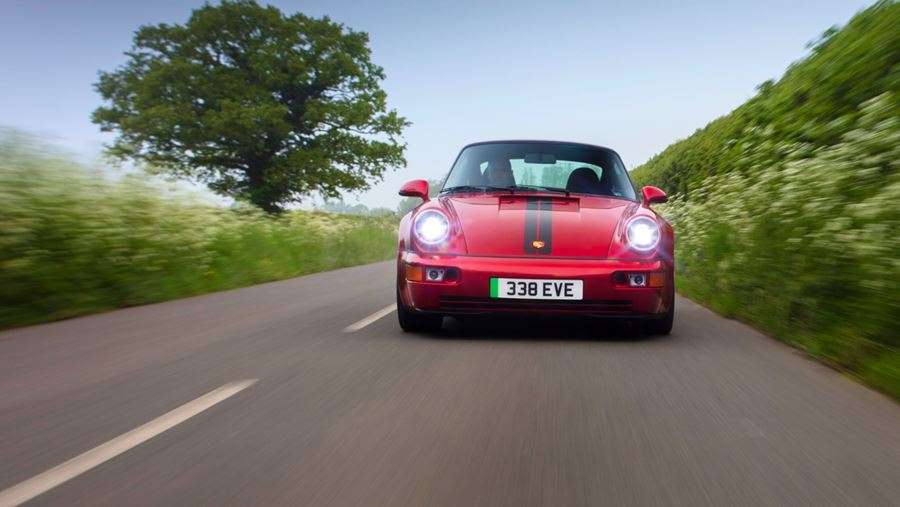
The suspension works exactly as intended, allowing you to firm up or slacken off the damping. We tried the setup in its hardest format and a more road-ready tune – the former added a sharper edge to the dynamics, allowing you to carve up corners with precision, the latter meant I could cruise in peace on a dual carriageway. There's some tyre noise, of course, but an original would have some, too.
As for the performance, it's... well, it's electric. Obviously. The way this thing shifts is more than enough to keep most supercars honest in a flat out drag race. And, very much unlike the wayward 964 Turbos of yore, the grip on tap allows you to hoof it mid-corner with confidence. The regenerative braking on the throttle took a little time to get used to, and I suggested to the team that an on-the-fly ability to change how much regen (allowing the car to coast on the motorway, for example) would be a bonus.
Of course, it's not a flat-six, with all of the additional involvement that brings to the mix. The addition of the 'engine' sound system helps to curb that to some degree, but there'll still be some classic car faithful that won't be able to get on with the lack of a combustion engine. Regardless, the Everrati 964 is eye-widening in how it delivers pace.
Everrati 911 Signature: verdict
Purely on objective terms, the small range, cost and the removal of one of the most iconic traits of a 911 – its flat-six engine – will be enough to cast this Everrati creation aside for some.
But the 911 even as a brand-new car is on borrowed time; even Porsche is looking at how to electrify its icon in-house. And behind the wheel of Everrati's creation, I couldn't stop smiling. The steering, suspension, atmosphere inside and sheer pace of the 964 Signature are plenty enough to involve you. It's still very much a 911 in the way it drives, which is something Everrati can be truly commended for – the stereotype of EVs being naturally heavy and inert to drive is simply untrue here. It also means it's entirely possible for OEMs to create fantastic-to-drive EV sports cars.
If the idea of futureproofing your classic for the zero-emission age sounds appealing, and you have plenty of dosh, it's at least worth giving Everrati a call.
(carmagazine.co.uk)
The Golf is again the best-selling car in Europe
Although sales in March jumped 63% from last March, the results are still far from those achieved before the pandemic.
With the exception of last year's crisis, last month's sales in Europe were the lowest since March 2013 and 22% lower than in 2019. At the same time, diesels reached a historically low share of only 24%.
According to data from 26 markets in Europe, sales jumped from 842,094 last year to 1,374,313 units in March, according to Jato Dynamics. That this is still not a reason to celebrate is confirmed by the fact that quarterly sales are only 1% higher than in the same period last year, ie the lowest since 1986.
"The European market is far from pre-pandemic, and governments need to take action to increase sales and restore customer confidence," said Felipe Munoz, a global analyst at JATO Dynamics.
What is required?
Only two groups of vehicles, SUVs and electrically powered models, recorded a positive result. In March, electric vehicles reached a record 16%. Recall, last March the share was 9.7%, and in 2019 only 3.4%.
The share of SUVs has risen even more. In March 2019, it was 37%, last year 40%, and this March as much as 45%. The largest increase in popularity is recorded in Sweden, Norway and our neighboring Slovenia and Hungary.
Best selling Golf
The Golf has regained the title of best-selling model on the European market, with an increasing share of hybrid performances. Sales were 26,265 units, or only 836 units more than the second-placed Peugeot 208, which is the quarterly winner.
The Opel Corsa is in third place, ahead of the Clio and Polo, and the fourth place was taken by the Tesla Model 3, also by far the best-selling electric model.
Let's also mention the novelties. The newly launched Citroen C4 reached 5,671 registrations, and the Opel Mokka up to 5,560 units. Electric VW ID.3 and ID.4 had slightly lower sales.
2022 Nissan Pathfinder Review: Outdoor Adventure Wagon Rebooted
When SUVs first arrived on the American scene, they were purpose-built, off-road adventure and utility vehicles. They weren’t luxurious and they weren’t comfortable; they were work wagons used by forest rangers and farmers. Somewhere along the way, they became eight-seat family vehicles, replacing the station wagon and minivan in most driveways. But the trend we’ve spotted for the 2020s seems to be an effort by automakers to recapture some semblance of that off-road adventurism after decades of moving toward making them glorified tall wagons.
The latest automaker to do that is Nissan, which has redesigned the latest 2022 Pathfinder three-row to be more rugged, more outdoorsy and slightly more capable in the dirt than its solidly street-oriented predecessor without giving up any of the luxury, safety and connectivity that modern families expect in an SUV. I drove the new ’22 Pathfinder through Southeast Michigan recently to see if Nissan’s moves to butch up the new Pathfinder have paid off.
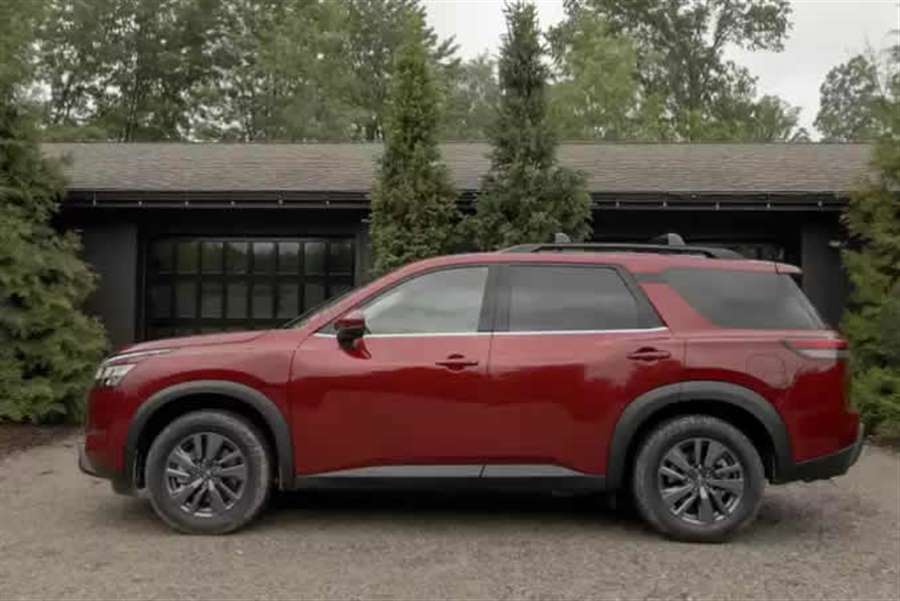
The Family Resemblance Is Strong
The fourth-generation Pathfinder was a generic blob-shaped thing that bore no family resemblance to the chunky original 1986 model at all. This new fifth-generation model is a complete departure that incorporates some styling cues from the original Pathfinder, such as the forward-swept C-pillar, three-slot grille and overall squared-off, thick body styling. It’s actually a little shorter than the outgoing model, but changes its proportions by being taller and wider.
I have to say it looks much, much better than the last Pathfinder, with definite family resemblance to the latest angular Nissans like the larger Armada and smaller Rogue. The slim headlights taper into the wide and prominent fenders, with the taillights stretching across the rear to again emphasize the Pathfinder’s width. Its geometric looks make the new Pathfinder feel like a larger vehicle than the one it’s replacing, but the overall dimensions don’t change all that much. Suffice it to say, it both looks and feels big — this was not an effort to slim down the SUV, this was an effort to make it look more rugged and aggressive, and it worked well.
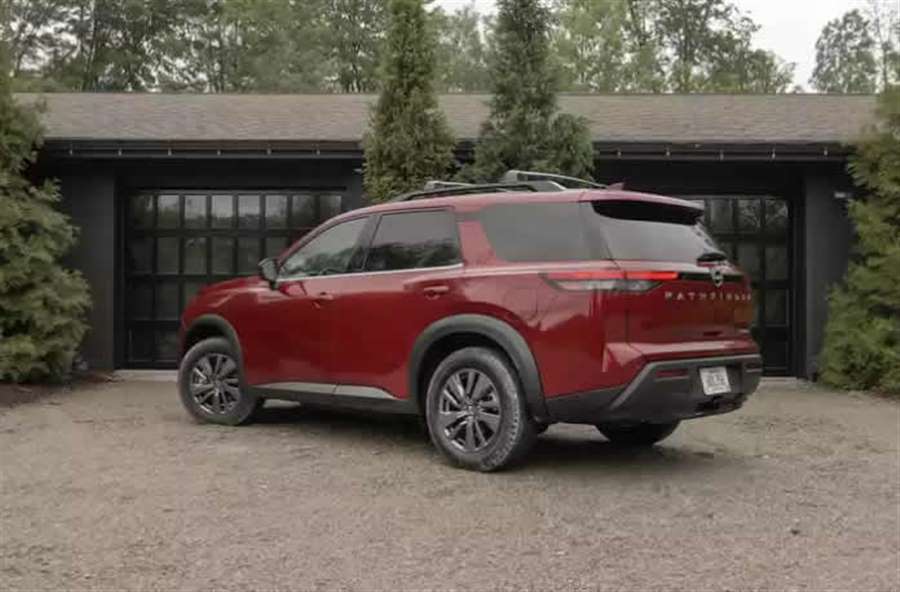
It Expects You to Drive Like the Family’s in There
Powering the 2022 Pathfinder is the same 3.5-liter V-6 that’s in the outgoing model — it makes 284 horsepower and 259 pounds-feet of torque, which is unchanged from the previous Pathfinder. What’s new is what that engine is connected to: a conventional nine-speed automatic transmission, replacing the unloved continuously variable automatic transmission in the old Pathfinder. That change is meant to improve the Pathfinder’s off-road ability, its towing durability, its driving dynamics and more — and in most ways, it delivers. It doesn’t sacrifice gas mileage, which is up 1 mpg combined in AWD versions over the 2020 model (the last model year sold). Lower trim levels increased from an EPA-estimated 22 mpg to 23 mpg, and the AWD Platinum is up from 21 to 22 mpg. The combined rating remains 23 mpg for front-drive Pathfinders, but the city/highway distribution has changed slightly to 21/27 mpg city/highway.
Driving the new Pathfinder is best done at a relaxed pace, as if the whole family is on board for a ride and you don’t want kids dropping juice boxes or Grandma to stress any joints. With moderate acceleration, the V-6 is perfectly adequate, the new nine-speed auto-shifts smoothly and calmly, and the whole experience is that of a big, heavy SUV doing what it does best: ferrying the brood to soccer practice or the mall in quiet comfort. The transmission does hunt a lot for its gears, but with nine speeds to play with, this is to be expected — only occasionally does it feel like it’s missing the beat and not keeping up with the driver’s anticipated moves. For example, when coasting down to a stop but then deciding to give it some more power as traffic has cleared from a light, it gets a little confused and might select a gear lower than it needs to. But overall, the powertrain is smooth, refined and perfectly adequate to the task of powering the Pathfinder.
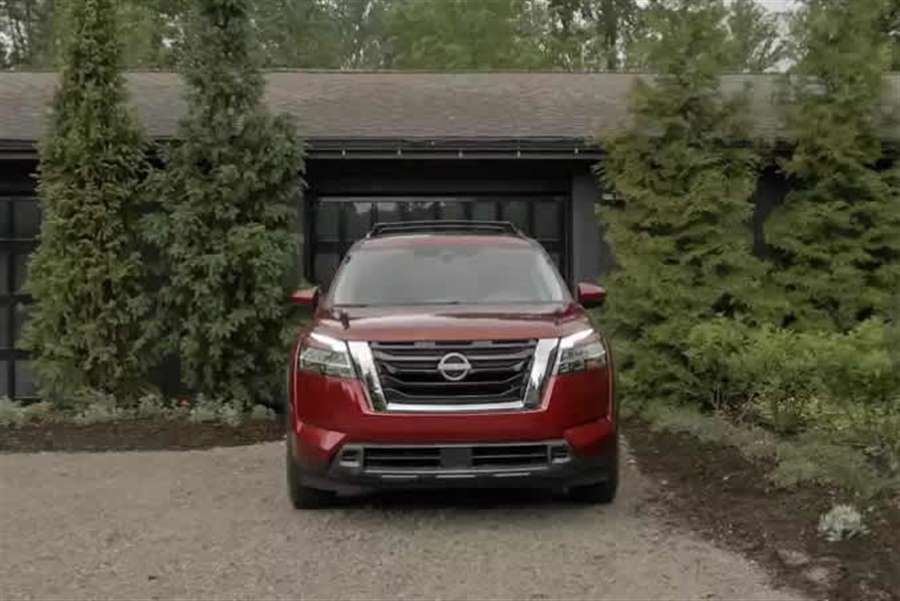
The Pathfinder’s overall feel is of a heavy SUV, however, especially when negotiating tight turns and roundabouts or performing hard acceleration and braking maneuvers. Body movement is pronounced in such situations, squatting hard on its rear haunches under full acceleration, diving noticeably under hard braking and plowing through quick turns with considerable understeer. It doesn’t like being hustled along quickly, lacking the athletic feel that a Ford Explorer has with its tightly controlled body motions and punchy turbocharged engines. Slipping the drive mode selector into Sport mode does improve steering feel and feedback, but it becomes clear to the driver that this is the equivalent of a family minivan, not a sports wagon, and that you (and your passengers) are going to be happiest keeping the Pathfinder at a simmer rather than a full steaming boil.
Comfort and Style Aplenty
But the Pathfinder will happily simmer along all day, with a truly comfortable ride even on high-spec models that have big wheels and low-profile tires. Road noise does make it into the cabin, again thanks to those big wheels and tires, and it’s made even more noticeable by the lack of wind noise to mask it. But the overall serenity of the Pathfinder’s completely redesigned cabin is barely affected by the outside world. The new look inside is excellent, with a modern feel and updated electronics that combine with solid material choices and build quality to create a well-updated cabin.
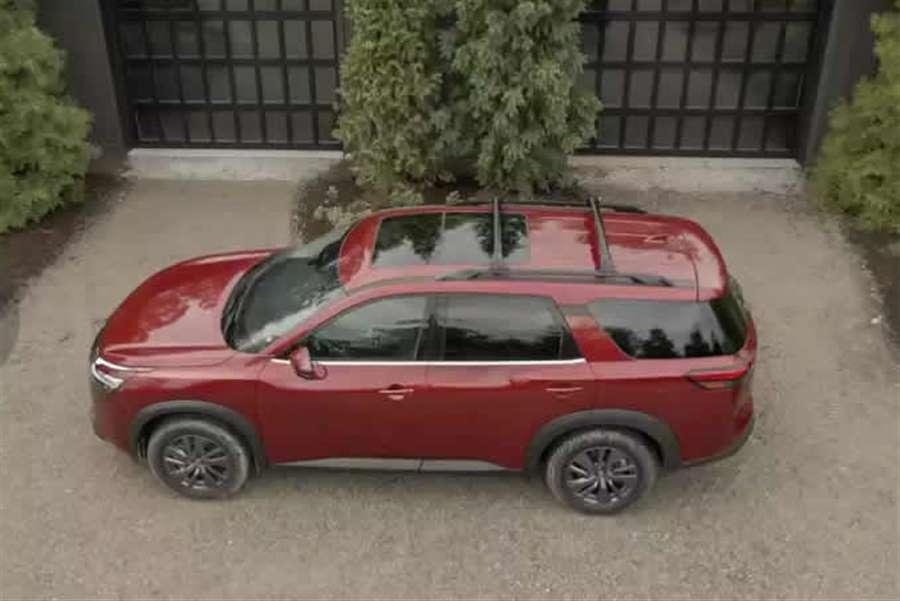
Seat comfort is good, but we’re still not seeing the “magic” of the so-called Zero Gravity Seats. They just feel like seats — no better or worse than any others, really (except, perhaps, for the aforementioned Explorer, which has seat bottoms that feel too short). There’s noticeably plentiful passenger space, however, with tons of room up front or in the sliding second row, both for width and legroom. The third row in many three-row SUVs is often best used only for children, with a few notable exceptions (like the Volkswagen Atlas and Hyundai Palisade). The additional width that comes with the new 2022 Pathfinder makes the third row here a usable size for adults, as well, especially given the second row’s sliding ability, allowing for passengers in the second and third rows to negotiate available legroom among themselves. Third-row ingress and egress is easy, too, thanks to Nissan’s one-touch EZ Flex Latch and Glide button that slides and tilts the second row, even with child-safety seats attached.
The updated interior electronics are welcome, with an available 9.0-inch touchscreen multimedia system that’s located high on the dash for easy visibility and use. It’s accompanied by an available 12.3-inch digital gauge cluster that provides all sorts of information, some more useful than others, and two different configurations that look slick. There’s also an available 10.8-inch head-up display that puts all the relevant information up in the driver’s sight line but features an oddly offset speedometer readout. Still, everything is clear and easy to read, and after some experimentation with configurations and settings, you’re sure to find a setup that provides all the information you want without having to hunt through menus. As with most new vehicles these days, Apple CarPlay and Android Auto come standard, and Wi-Fi connectivity with wireless charging is available.
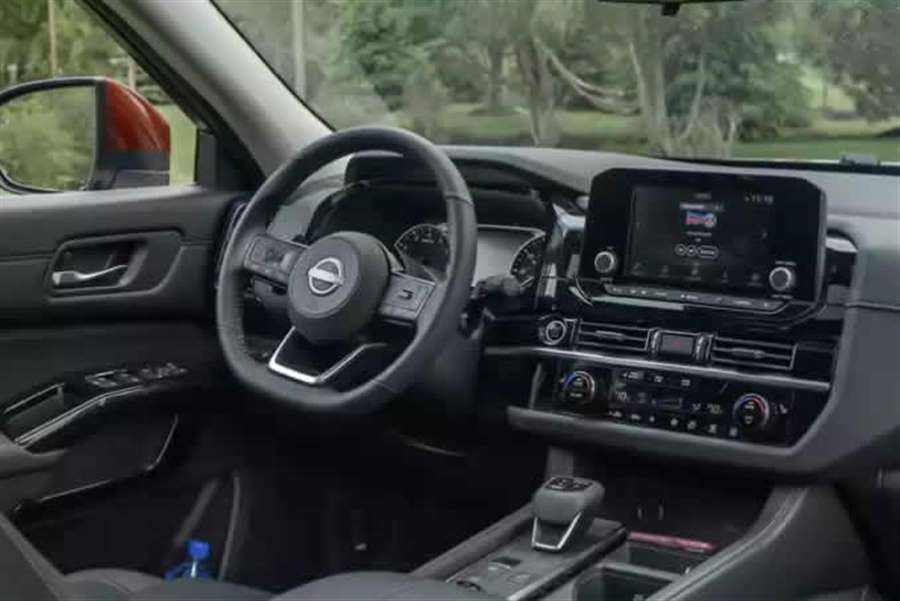
About That Ruggedness …
Nissan felt it important to demonstrate that the new Pathfinder is a capable off-roader, as the changes made to amp up its rugged image are more than just cosmetic. That’s why the company booked some time at Holly Oaks ORV Park north of Detroit for a brief romp through the dirt and mud to show off the Pathfinder’s terrain select function.
Rotating the selector through the options to the Mud and Ruts function changes a host of vehicle attributes, while a quick push of the central button engages the automatic hill descent control. And with that, the Pathfinder was off to tackle terrain that it’s unlikely to see in the hands of typical buyers — loose gravel ascents, steep and slippery slopes — which it did without complaint or difficulty, it must be said. We didn’t do any serious rock crawling, but let’s be honest here: Despite the Pathfinder’s looks, this is not a proper off-road machine. It does feature a new clutch that allows for predictive all-wheel drive (no longer waiting for front-wheel slip to be detected before engaging the rears, the computer makes the call before that happens now), but the all-season tires, lack of underbody skid plate protection and no locking transfer case mean this is still a soft-roader, and that’s perfectly fine. You can option up a Pathfinder with accessories that make it a bit more capable, but anyone serious about going further off-road is likely looking at a Nissan Titan pickup in Pro-4X trim instead. Suffice it to say that the Pathfinder will handle rutted dirt roads and family off-grid camping duty just fine thanks to its softer suspension, but you’re not likely to ever see one out overlanding across the Arizona desert.
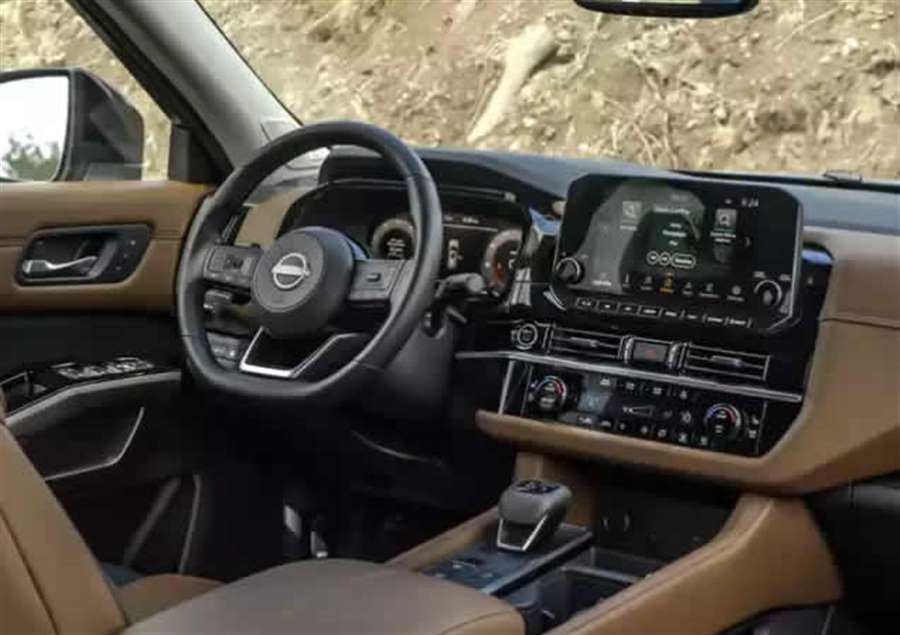
Nissan has kept the trim levels and pricing for the new Pathfinder simple with four trim levels. Two option packages are available, as well, so finding a Pathfinder that has a specific option you want (like the panoramic moonroof or leather interior) means finding the required trim level. The starting price is $34,560 for a front-wheel-drive S trim, which is roughly $1,400 more than the outgoing 2020 Pathfinder, while a Platinum 4WD rings in at just less than $50,000. That’s a healthy jump over the outgoing model, but it does reflect considerable added standard equipment, the most important of which might be the updated Nissan Safety Shield 360 system that brings automatic emergency braking with pedestrian detection, lane departure warning, rear cross-traffic alert, blind spot warning, high-beam assist and class exclusive rear automatic braking — that last one being a key feature for a family car, where kids may be running around the vehicle. The Pathfinder also features a driver alertness sensor, rear door alert and rear sonar as standard, with blind spot intervention, lane intervention and traffic sign recognition as optional. Nissan’s latest ProPilot Assist cruise control is also available, which helps steer the vehicle on the highway but doesn’t let you remove your hands from the steering wheel, unlike GM’s Super Cruise system.
So in the end, yes, the new Pathfinder is indeed a bit more rugged and a bit more capable off-road. But honestly, I think the areas that will matter more to its intended buyers are the better interior space, top-notch connectivity, smooth and quiet ride, and its ability to be an even more comfortable and capable family vehicle. The trend toward being more outdoorsy after enduring pandemic lockdowns will match well with the Pathfinder’s new image and abilities, but it’s good to know Nissan hasn’t sacrificed the aforementioned areas in which the Pathfinder needed to be good in favor of new areas where it really didn’t need to go at all.
(cars.com)
Mercedes-Maybach S680 4Matic - Top variant of the S class
Car lovers in the last few days definitely have reason to rejoice…
As we find out, the Mercedes-Maybach with a powerful V12 engine is definitely not dead. The famous German brand has finally presented a top variant of the S-Class line, which is still powered by this beastly unit. The 2022 Mercedes-Maybach S680 4Matic, is based on the new W223 generation S-Class and replaces the S650 that already exists in the Maybach portfolio. Beneath its long hood hides a six-liter V12 engine with two turbochargers that produces 621 horsepower.
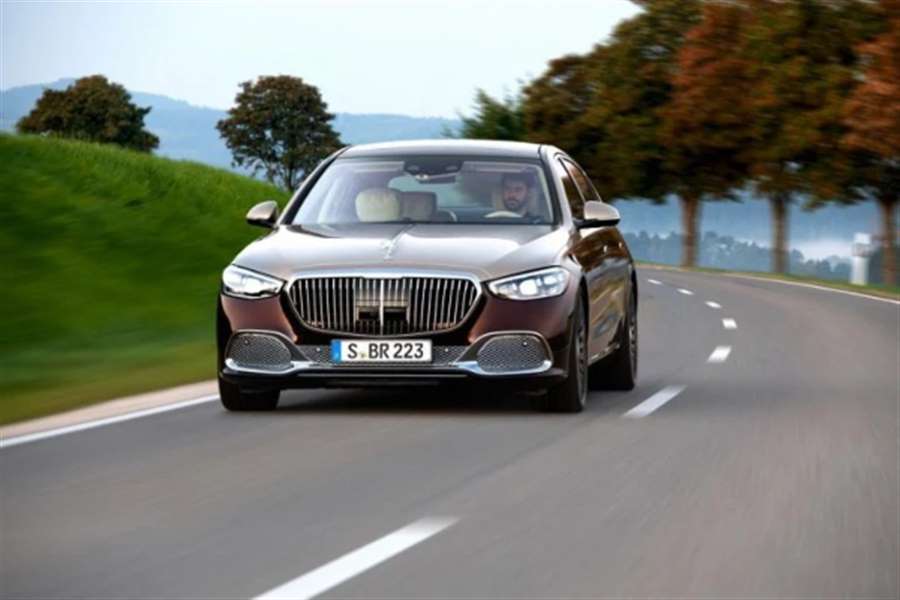
This engine is powerful enough to accelerate a massive luxury sedan weighing more than 2.5 tons from zero to one hundred kilometers per hour in just 4.4 seconds, before reaching an electronically limited top speed of 210 kilometers per hour. You may also have noticed the 4Matic suffix in its name which tells us that all-wheel drive is part of the standard offering. The premium Maybach has also been given all-wheel drive, making it easier to maneuver in tight spaces.
The design and special treatment that the Mercedes-Maybach S680 received is almost identical to the one we already saw on the S580 unit introduced late last year, except for the specific markings. This means that the model wears the same radiator grille with stainless steel details, while the two-tone exterior is optional and available in 10 contrasting finishes.
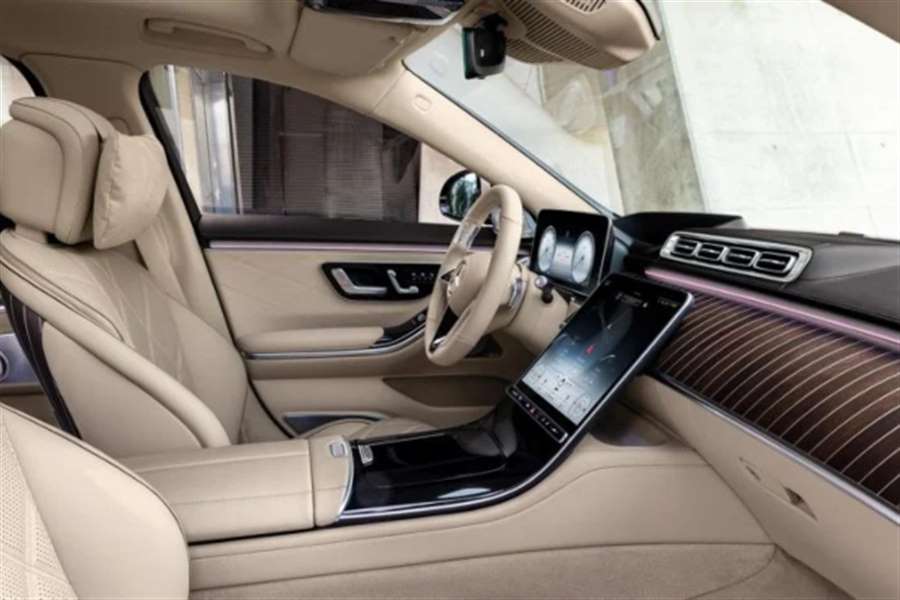
The passenger cabin is where a really special story begins. The interior is characterized by ultra-delicate Nappa leather, which can be seen on the dashboard, sky and visors. To further pamper passengers and drivers, the cab recognizes hand gestures and thus controls the sliding panoramic roof, rear shades and doors. The cabin itself is quiet thanks to all the materials that make it up, but the active sound control can be attributed to the Burmeister 4D surround sound system filter, which will eliminate even the tiniest road sounds, which manage to creep into the interior of the vehicle.
According to the Mercedes brand, the S680 will be available for purchase during the first half of next year, but its official price has not been announced yet. Since we know that a slightly weaker variant of the Mercedes-Maybach S580 can be purchased at a price of 163,000 euros, we can already assume that this novelty will be significantly more expensive. Still, did the Maybach owners ever care about the price?

